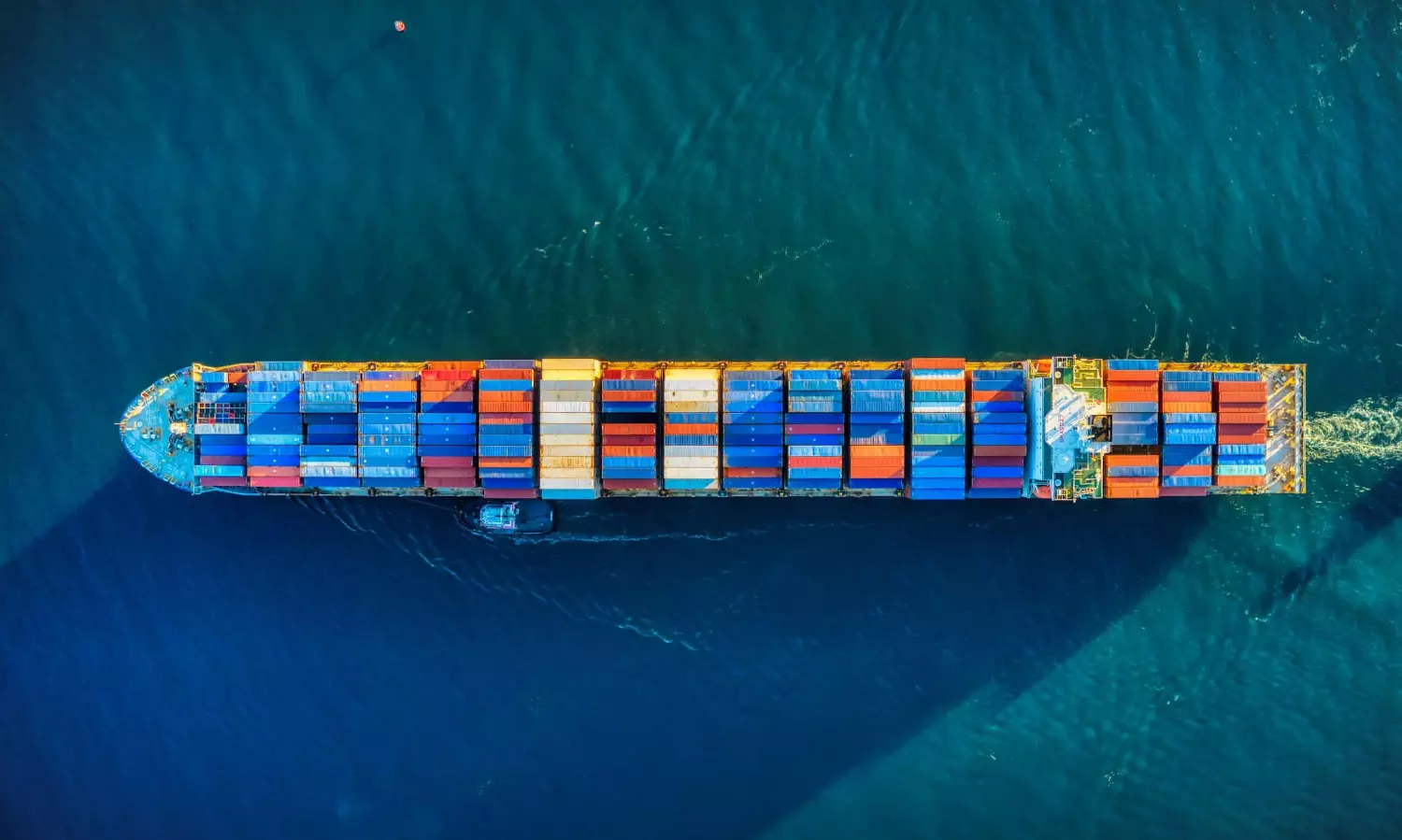Multiple reasons contribute to high container freight rates: Dimerco
Red Sea crisis continues to cause significant disruptions in global shipping; three alliances short by 36 vessels

Continued capacity withdrawal by the carriers, combined with a significant surge in ocean exports of e-commerce goods and renewable energy-related shipments from China, has driven the peak season forward by one month, from June to May, according to the latest update from Dimerco Express.
"This shift is an attempt to avoid the heavy anti-dumping import tariffs that the U.S. and Europe may impose by the end of the year. This change is reflected in the Shanghai Containerized Freight Index (SCFI), which showed a strong rise as of May 17th. The comprehensive index increased by 9.3 percent, the U.S. West Coast (USWC) by 14.4 percent, the U.S. East Coast (USEC) by 8.3 percent, Europe Westbound (Europe WB) by 6.3 percent, and the East Coast South America (ECSA) by 22.4 percent."
Carriers have announced the cancellation of 44 sailings on their East-West head haul trades from weeks 21 to 25, representing a cancellation rate of seven percent out of a total of 652 sailings, according to the update, quoting Drewry. "Of these 44 blank sailings, the Trans-Pacific Eastbound, Europe/Mediterranean Westbound, and Trans-Atlantic Westbound routes accounted for 50 percent, 27 percent and 23 percent, respectively. By alliance, the Ocean Alliance topped the list with 13 cancellations, followed by THE Alliance with 10, the 2M Alliance with eight and non-Alliance services with 13 cancellations during the same period."
A variety of factors continue to contribute to sky rocketing ocean freight rates:
*The Red Sea crisis continues to cause significant disruptions in global shipping;
*The three alliances are short by 36 vessels - equivalent to 9.6 percent (509,400 TEUs)— making it harder to maintain the weekly intervals for all 25 loops, assuming rerouting from the Suez Canal to the Cape of Good Hope persists; and
*There has been a significant surge in advance bookings from China, particularly for electric vehicles, as exporters aim to avoid the high import tariffs that the U.S. will impose by the end of the year.
“The ripple effect of the Red Sea crisis is impacting not only long-haul routes but also intra-Asia routes," says Alvin Fuh, Special Assistant to the CEO, Dimerco Express Group. "For example, Singapore, a major transshipment hub in intra-Asia, is experiencing severe port congestion. The average waiting time for vessels to berth ranges from two to six days. As a result, some carriers are redirecting long-haul loops from Singapore to alternative ports like Port Klang or Tanjung Pelepas as a contingency measure. The limited availability of long-haul, way-port slots for co-loading intra-Asia bookings, coupled with an increase in blank sailings, has caused intra-Asia market rates to rise since mid-April.”
Country report
Space from Taiwan to the U.S. and Europe is fully booked until mid-June, requiring bookings to be made a month in advance to secure space. Effective June 1, rates to the U.S. and Europe will see a general rate increase (GRI) exceeding $1,000 per 40’, alongside a peak season surcharge for the Transpacific Eastbound (TPEB) trade on June 1 and 15.
Space for USWC is backlogged (backlog of one-two days found in the market) from Hong Kong and space to USEC is tight. Rates are increasing and space is tight on the Europre trade lane due to high demand and disruptions to container shipping in the Red Sea.
For India, capacity and rates for intra-Asia and Europe remain stable for the coming month with no signs of carriers conducting blank sailings. However, there is a rate reduction to the U.S. East Coast.
For the U.S., carriers are adjusting space allocations to non-vessel-operating common carriers (NVOCCs) due to the sharp increase in Transpacific Eastbound rates. "As of April 2024, NVOCCs' share of volume has decreased to 43.7 percent, down from 49.7 percent for the full year of 2023. Fixed-rate space allocations have also been reduced as ocean carriers pursue higher spot rate cargo. In addition to a 19.1 percent increase in volume to 5.6 million TEUs year-over-year in the first four months of 2024, capacity reductions of 14 percent to the West Coast and 11 percent to the East Coast have significantly contributed to the recent surge in rates."


